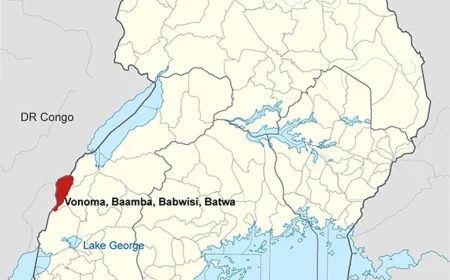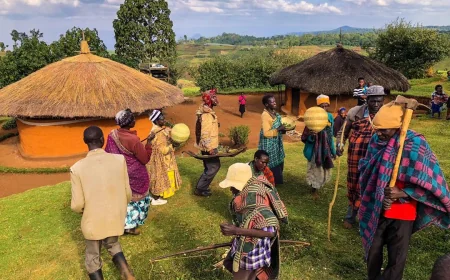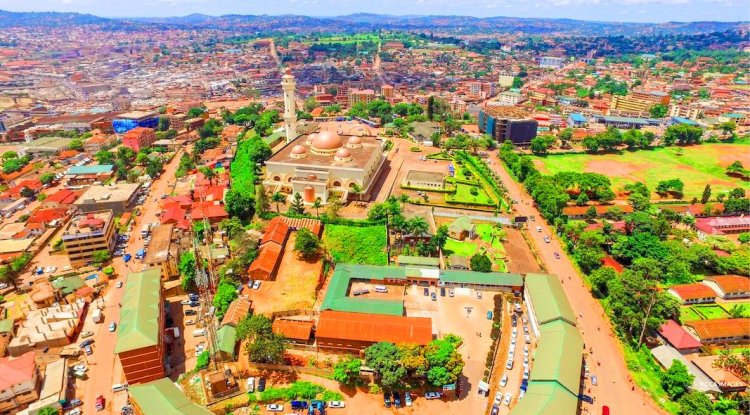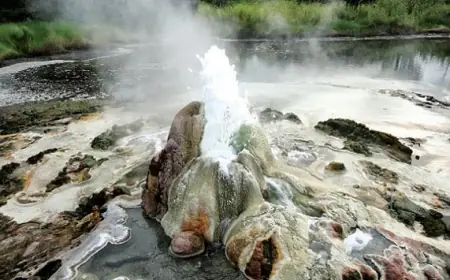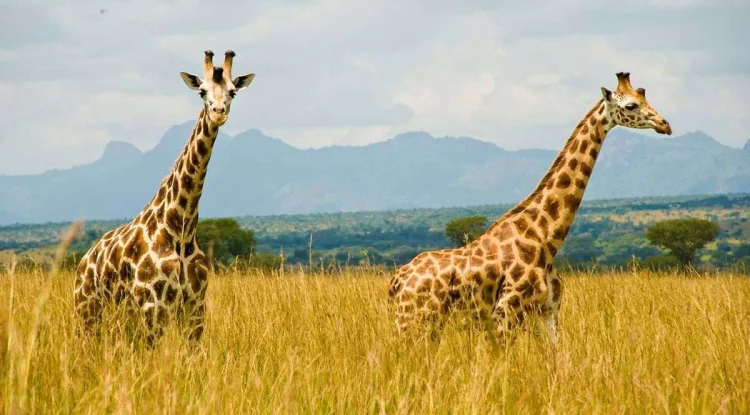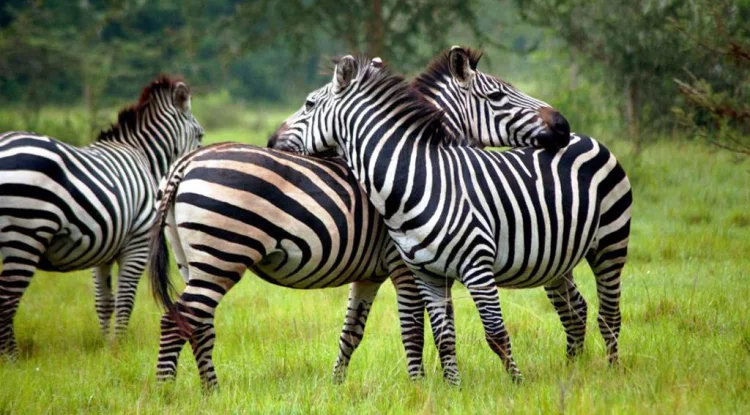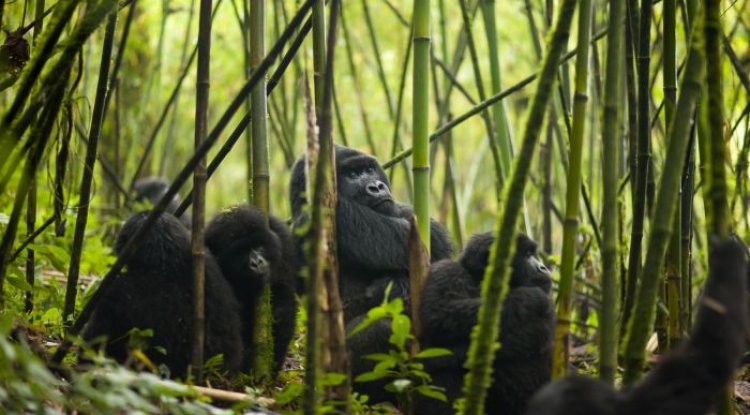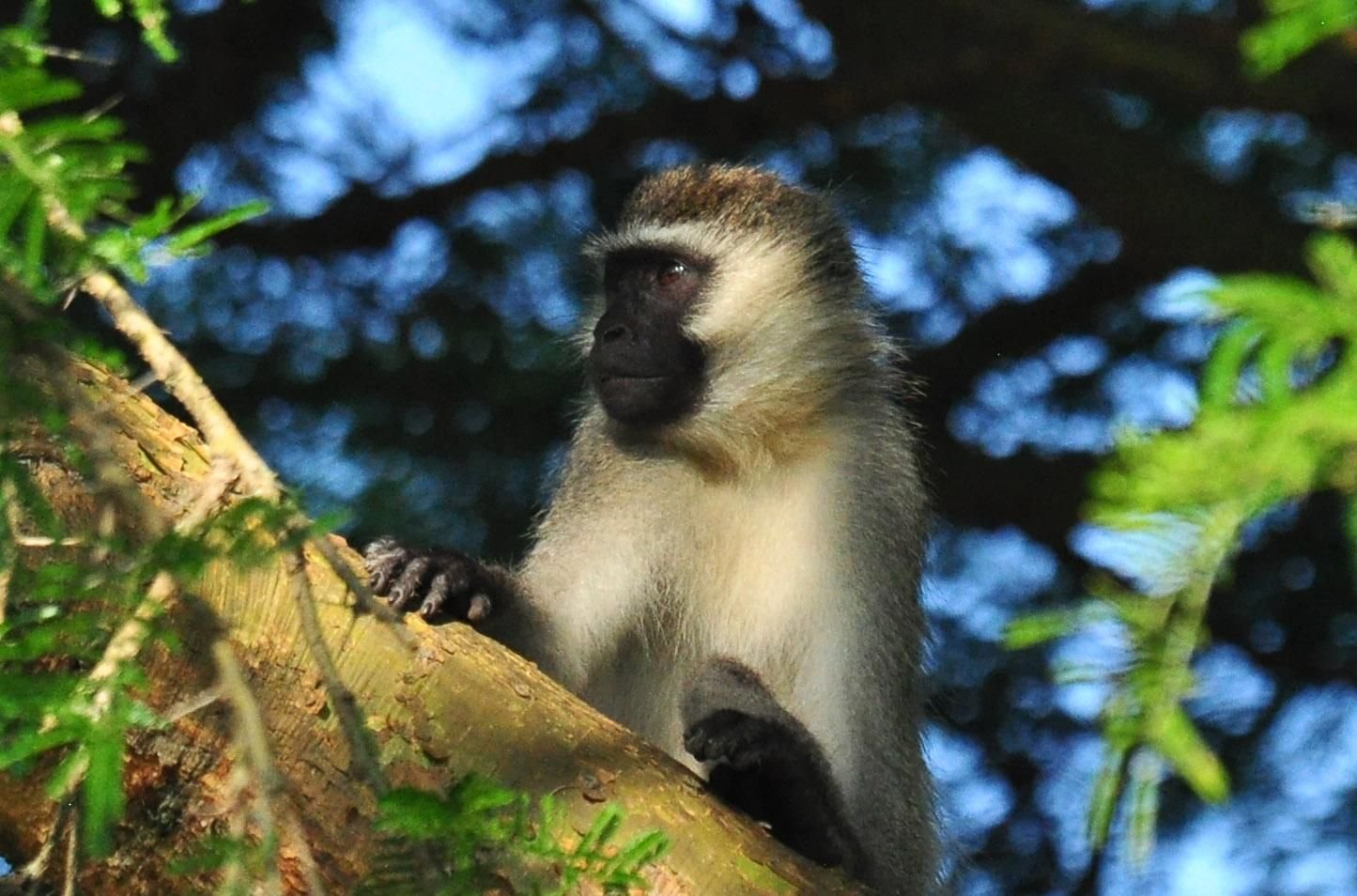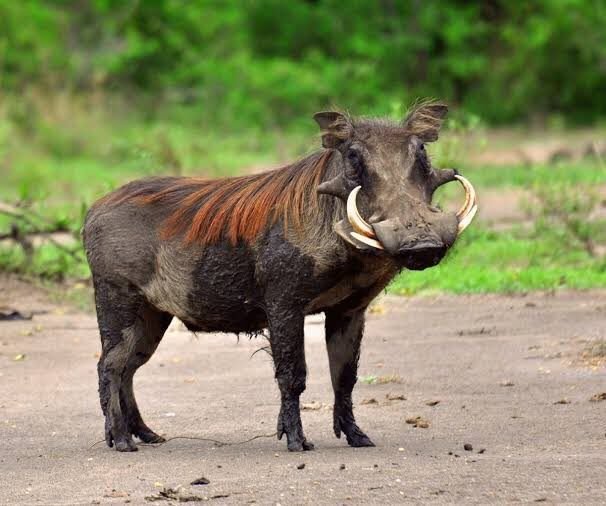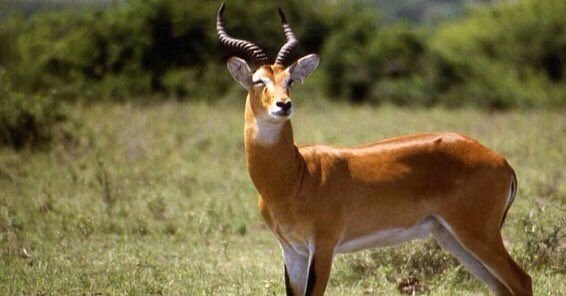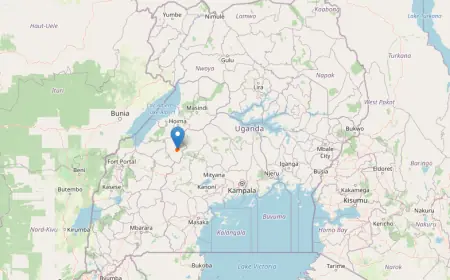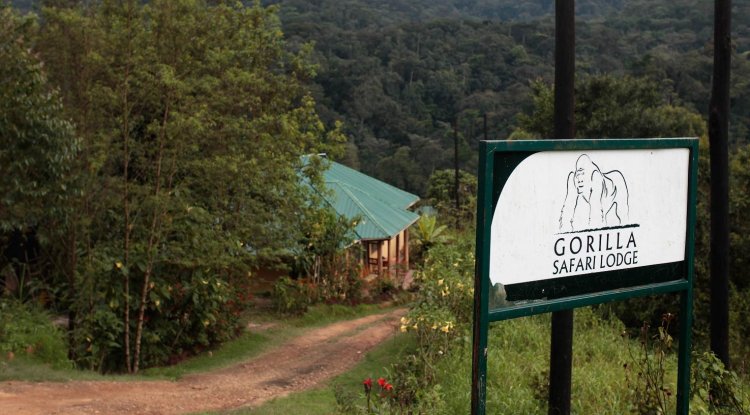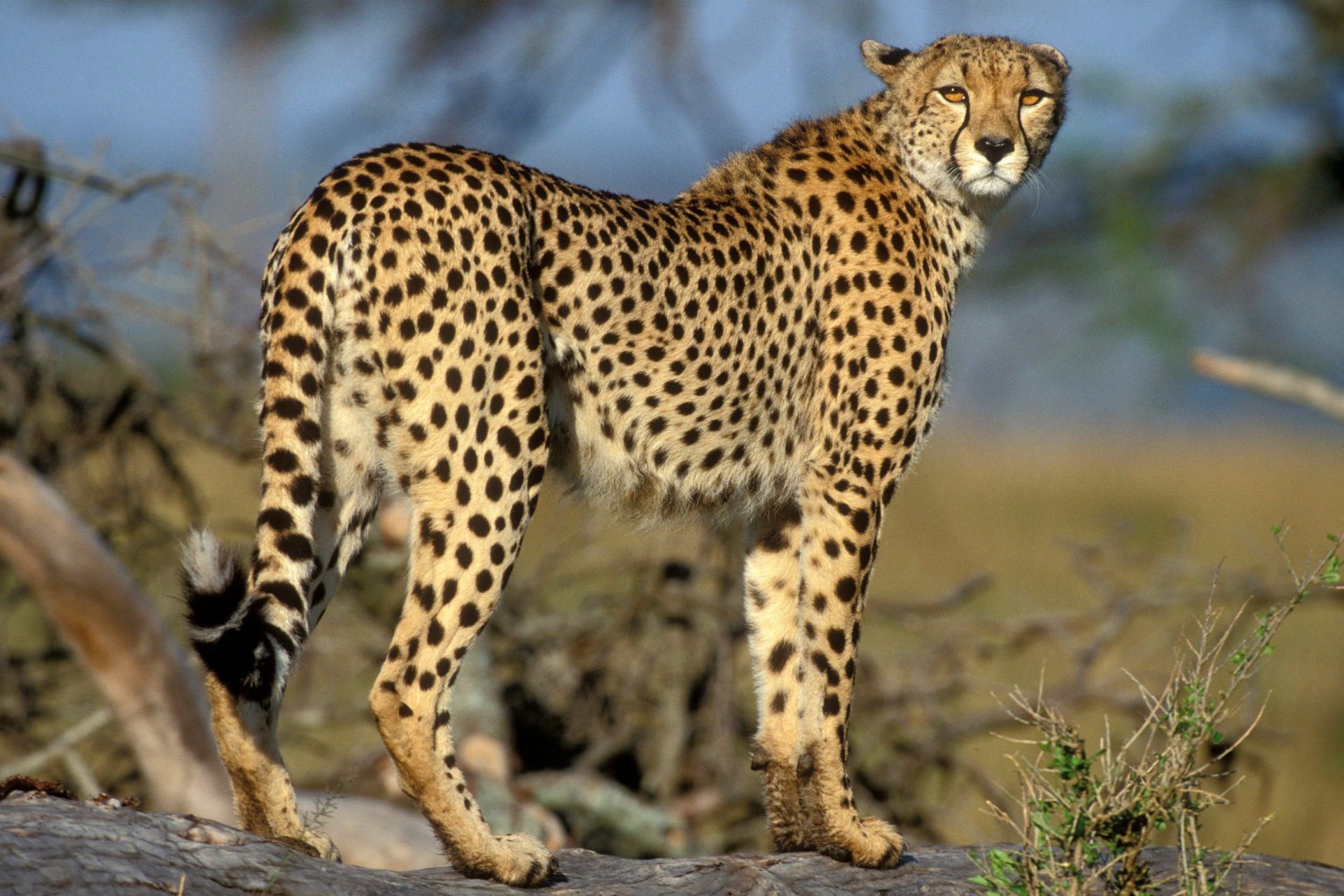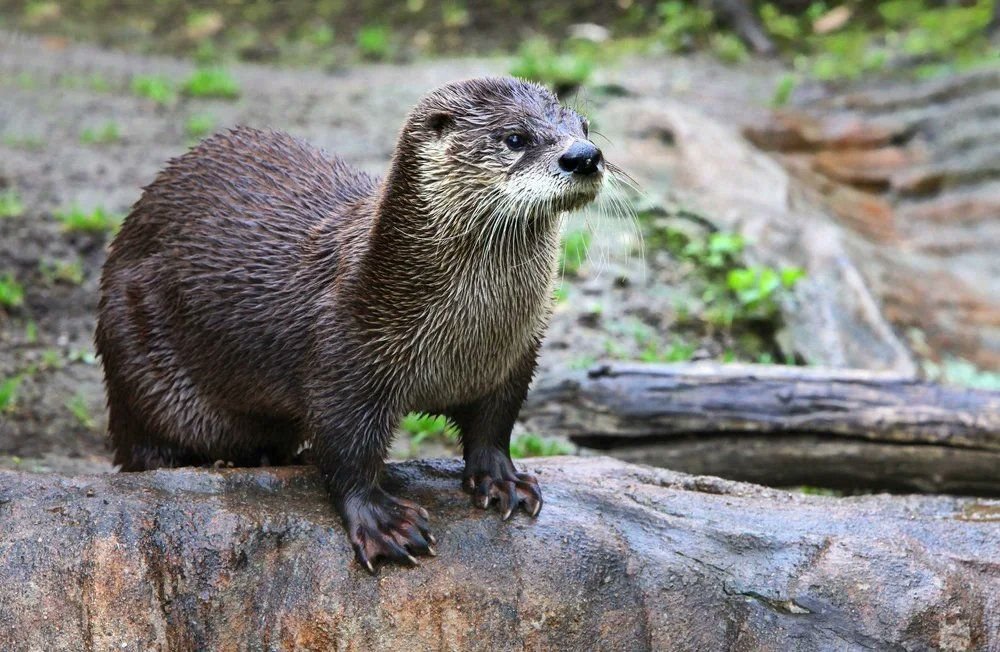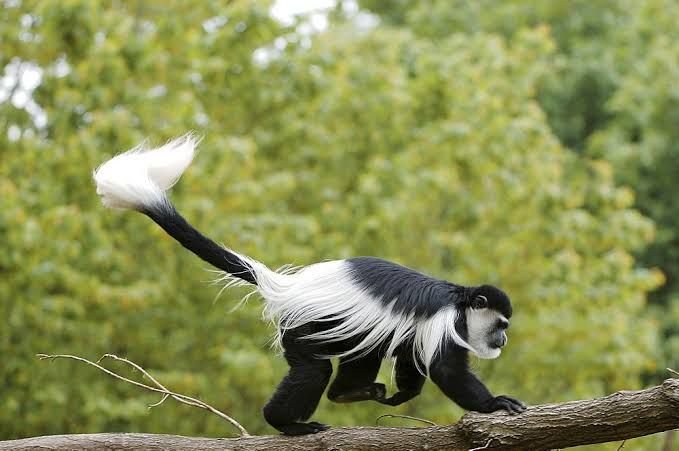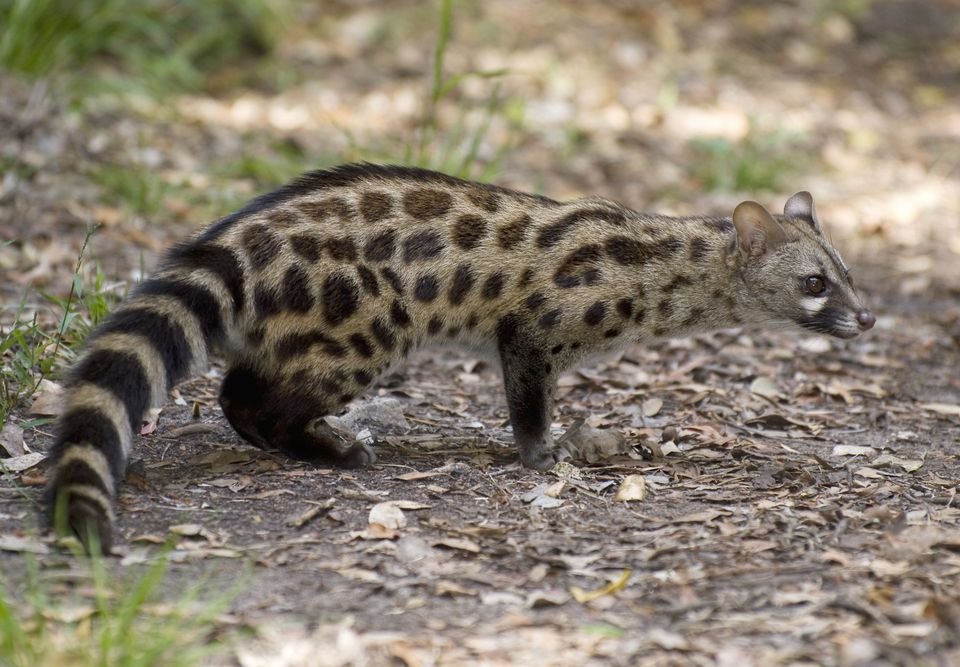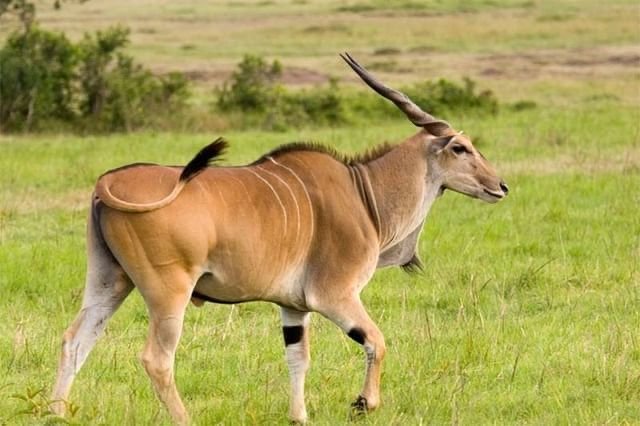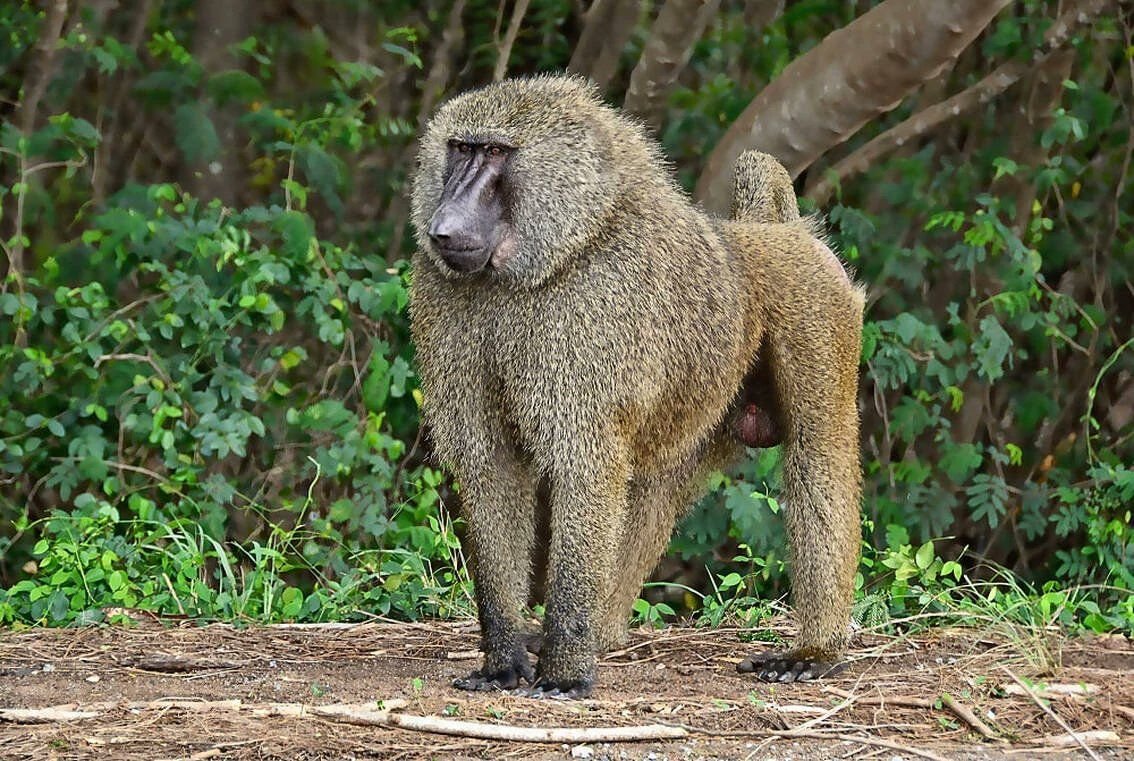African elephant (Loxodonta africana)
The national parks of Kidepo, Queen Elizabeth, and Murchison Falls are the most likely places in Uganda where you will observe an African elephant. We advise you to go on a boat safari on the Nile in Murchison or ride the Kazinga Channel in Queen Elizabeth National Park if you want to get up close and personal with the elephants. The majestic giants can be seen delicately herding along the banks of the stream.
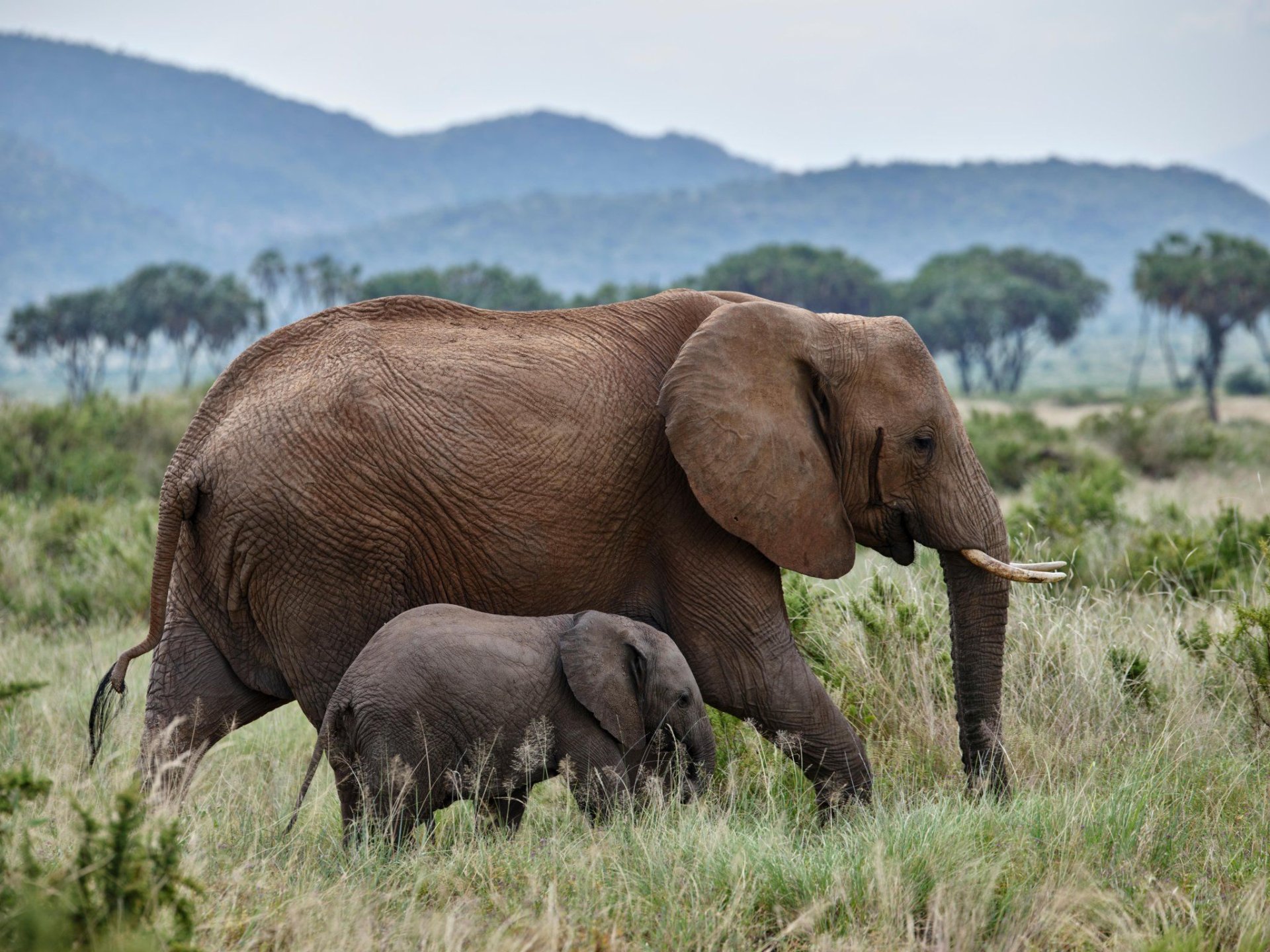
African bush elephants (Loxodonta) and the smaller African forest elephant are the only two living species of elephants in the genus (L. cyclotis). Both are gregarious herbivores with grey skin, although they differ in terms of their ears' size and shape, their skulls' shape, and the size of their tusks.
The African bush elephant is the world's largest land animal. A fully mature male elephant can weigh up to 6300 kilograms; even the smallest adult male rarely weighs less than 4000 kilograms, which is more than double the weight of a typical family SUV.
African elephants have grey-folded skin that can be up to 30 mm (1.2 in) thick and is covered in sparse, bristling dark-brown to black hair. On the trunk, short, tactile hair grows, with two finger-like processes at the tip.
Their huge ears serve to lower body heat by creating air currents and exposing the inside sides of the ears, where numerous blood veins facilitate heat loss during hot weather. The trunk is a prehensile extension of the animal's upper lip and nose. The trunk is so strong because of its muscular structure that elephants can use it to lift around 3% of their own body weight. It is used for smelling, touching, feeding, drinking, dusting, making noises, loading, protecting, and attacking. Elephants will occasionally swim underwater while using their trunks as snorkels.
Tusks on both male and female African elephants develop from deciduous teeth called tushes, which are replaced by tusks when calves are about a year old. Tusks are made of dentin, which creates little diamond-shaped structures in the middle of the tusk that grow larger at the periphery. Tusks are largely utilised for digging for roots and stripping the bark from trees for food, fighting during mating season, and defending against predators.
Behaviour of elephants
Elephants, especially African elephants, have the shortest sleep durations of any species. In 24-hour cycles, it was discovered that they slept for only 2 hours on average. Each family group of both African elephant species consists of multiple adult cows, their daughters, and their subadult boys. The matriarch, an older cow, is the head of each family. They create kinship or link groupings when dispersed family units come together. Male elephants often build tight bonds with other males after reaching puberty. African elephant herds are dominated by females, who are also the most active.
The bulls were thought to be solitary creatures that became independent as they grew older. According to recent research, bulls help the herd survive by maintaining ecological knowledge, which aids the young bulls who connect with them and helps them find food and water. Bulls don't care for their children throughout pregnancy; instead, they act as a father figure to younger bulls to assert their authority. Bulls only return to the herd to breed or socialise.
Intelligence
African elephants are highly intelligent. They share a neocortex with humans, apes, and some dolphin species that are extremely vast and highly complex. They are among the most intellectual animals on the planet. The elephant brain is larger than the brains of all other terrestrial animals, weighing a little over 5 kg (11 lb). The structure and complexity of the elephant's brain are comparable to those of humans, and the elephant's cortex contains the same number of neurons as those in the human brain, supporting convergent evolution.
Elephants display a wide range of behaviours, including those linked to learning, imitation, play, comedy, altruism, using tools, compassion, collaboration, self-awareness, memory, and potentially language. All of these actions indicate the existence of a highly intelligent creature, seen as being on par with cetaceans and primates.
African Elephant reproduction.
African elephants are most productive between the ages of 25 and 45. After a gestation period of up to almost two years, calves are born. In a practice known as allomothering, the mother and other young females in the herd take care of the calves.
Female African elephants can begin reproducing when they are between 10 and 12 years old, and their estrus period lasts between 2 and 7 days. They don't have a set period when they mate, although they are less likely to procreate during dry spells than they are during wet ones. Elephants have a 22-month gestation period, and viable females typically give birth every 3-6 years, meaning that if they live to be approximately 50 years old, they may have 7 kids. Males compete fiercely for access to estrous females because they are a limited and movable resource.
What is the lifespan of elephants?
According to reports, an African elephant may live up to 65 years in captivity. Unpublished accounts, however, claim that captive African elephants may live for up to 80 years. African elephants often live 60 to 70 years in the wild.
Vocalisation of elephants
Elephants communicate across great distances by using some vocalisations that are inaudible to humans. Elephants gently entwine their trunks as part of their mating ritual.
Diet of elephants
The African elephant's tusk and trunk are used to tear at branches when it is dining, which can seriously harm vegetation. Large food intakes are made possible by the hindgut's ability to ferment the meal. The African elephant's huge size and hindgut enable it to digest a variety of plant materials, including fibrous stems, bark, and roots.
Where to see elephants in Uganda
The savannah plains of Uganda are inhabited by numerous African elephants. You may get near to an isolated bull even on an unguided drive in one of Uganda's national parks. Try travelling through Queen Elizabeth National Park on the route between Kasese and Ishaka to look over the expansive plains and keep an eye out for large, dark figures.
You may get close to several elephant herds by driving on the game trails in the national parks of Murchison Falls, Queen Elizabeth, and Kidepo.
Visit Murchison and take a Nile cruise, or visit Queen Elizabeth National Park and ride the Kazinga Channel. You'll be so close to the majestic giants that are herding along the banks of the lake that you could almost touch them.
What's Your Reaction?
 Like
0
Like
0
 Dislike
0
Dislike
0
 Love
0
Love
0
 Funny
0
Funny
0
 Angry
0
Angry
0
 Sad
0
Sad
0
 Wow
0
Wow
0

